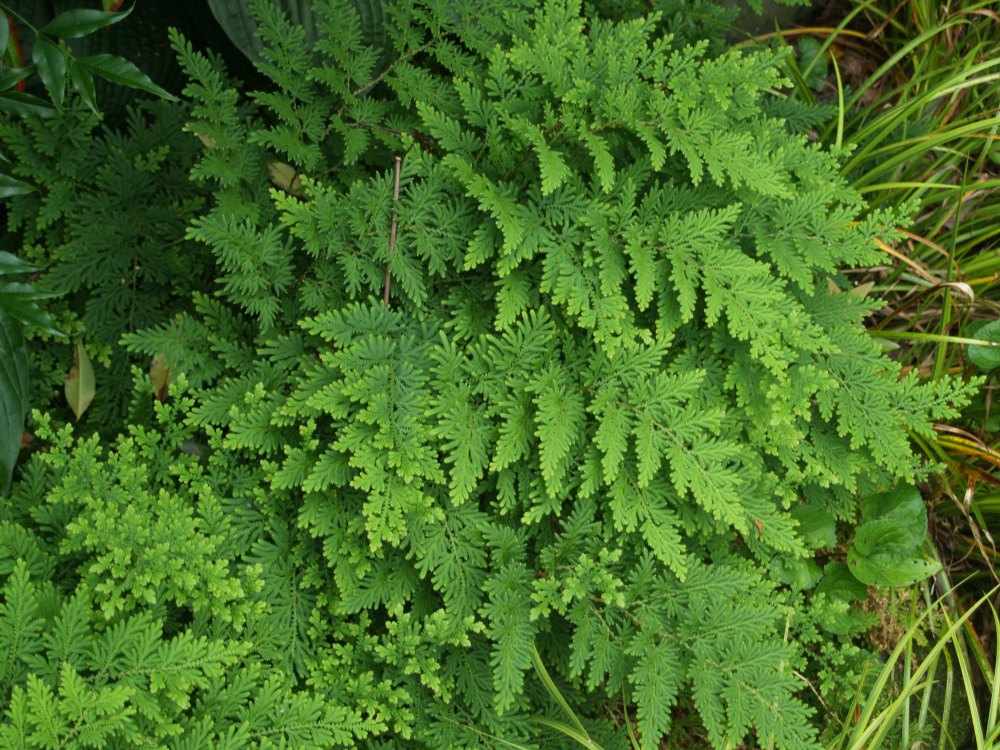Through trial and error the gardener slowly determines successes and failures. In a sunny garden, answers come more quickly than in shade, and in dry shade successes might not be settled until years after planting. Survival through one, or a few years, does not assure that a plant will tolerate root competition for a longer period, so the gardener is advised not to go whole hog until a longer experience shows that survival is likely. To further complicate matters, one gardener’s experience is hardly a guarantee for success in another garden with varying exposure and soil types, much less levels of care.

Despite years of planting in dry shade, I now face a quandary, what to plant in an area beneath a large purple leafed beech where lawn has faded to dust? The failure of the lawn has been in the works in recent years, and the problem with the lawn’s survival is the same that concerns me in planting anything else. The shallow, thirsty roots of the gigantic beech are so dense that there is hardly enough soil to carve out a small hole.

This is a space that would be superb for Japanese Forest grass (Hakonechloa aureola, above), small leafed hostas, or any of a dozen ferns that are planted elsewhere in the garden. But first, can I dig a hole? And second, can I possibly keep whatever it is that’s planted moist enough to survive? I have my doubts, and this is what has delayed the project from being done a few years earlier. But now, there’s a cloud of dust that blocks the sun to half the neighborhood when I mow the small front section of lawn, which disturbs my wife and I suppose could be a problem to the neighbors. So, something must be done.

I’ve considered adding a layer of soil or compost over the top of the beech’s roots, but I’m concerned that this will be washed off the slope in the first storm. I have a few, possibly hair brained ideas which are likely to do no good at all, but the dust clouds must stop, and with cooler and hopefully wetter weather ahead, the time is now, so I’ll figure out something.

In other areas of shade that are moderately dry by comparison, I’ve had reasonable success with a mix of shrubs, perennials, and ferns. If I can remember to spray the deer repellent in November, the aucubas (Aucuba japonica ‘Gold Dust’ and others, above) and mahonias (Mahonia bealei and ‘Winter Sun’, which do not require protection from deer due to their sharply spined leaves) provide a nice, evergreen presence. Though they survive, the area is too shady for camellias (Camellia japonica) to have any more than a few scattered blooms, and these must also be sprayed to keep deer away through the winter.

Though hostas are not as large and lush as in damper shade, they manage quite well in challenging conditions. If the ground gets really, really wet in September, say from a tropical storm or two, I could consider dividing a few hostas from the large clumps. This could make it simpler to shoehorn plants in between the beech’s roots, and if the transplants are lost, oh well, they didn’t cost a thing. Perhaps a few Painted fern seedlings could be interspersed with the hostas, and if anything lives this would be a bonus. Certainly, I’ll report back, if it works.
I have had good luck with epimedium under a large Colorado spruce. That area was very dusty when mowing also. The epimedium transplanted easily and filled in quite nicely.
I have epimediums and euphorbias growing in very dry shade with excellent results. Robb’s euphorbia is probably a bit tall for the area beneath my beech, but epimedium would work well. In fact, there’s a clump growing the middle of the spread of euphorbia, and it would probably appreciate the move.